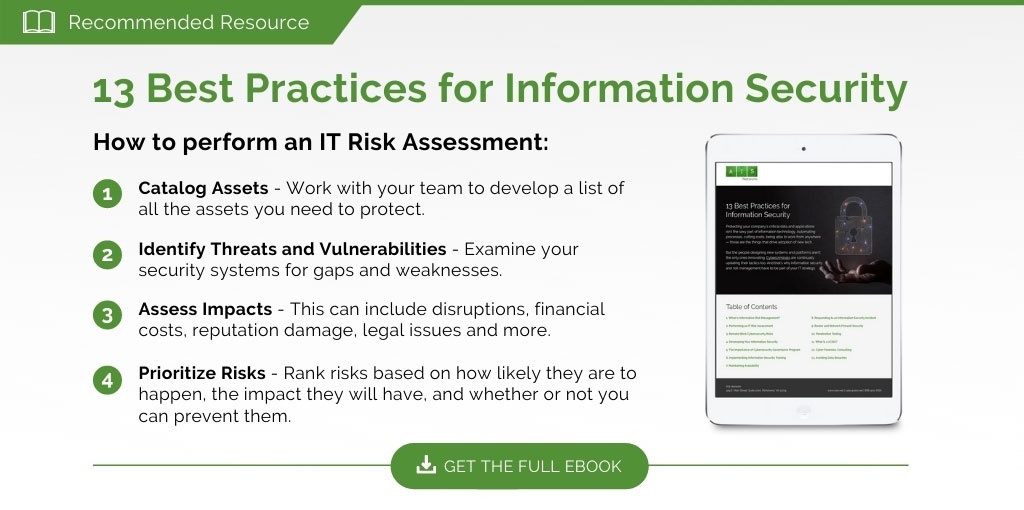
Do You Need an Information Security Program?
If your company doesn’t handle sensitive or proprietary data, you might think that developing an information security program isn’t something you need to worry about. But you’d be very, very wrong. While it’s important to protect your clients’ personal data, data breaches and cybercrime can expose you to a wide variety of losses:
- Financial Loss
- Reputation Damage
- Intellectual Property Loss
- Operations Downtime
- Customer Loss
- Stock Price Decline
- Loss of Market Share
- Employee Turnover
3 Key Factors of Information Security Program
1. Confidentiality
2. Integrity
3. Availability

Developing a 4-Stage Strategy
Prediction
Prevention
Detection
Response
Prediction
Prevention
Once you’ve identified known vulnerabilities and threats, the next step in your information security program development is to take steps to reduce the chances of an incident occurring. At this stage, it’s important to establish a system of governance: a chain of command that ensures someone has ownership of the preventative measures put in place. Appointing a CISO (chief security information officer) can be valuable if your organization lacks a specific person to oversee this process.
Detection
Response
If and when the worst happens, a carefully planned and rapidly enacted incident response plan can help ensure the threat is quickly contained and the damage mitigated. The response stage of your information security program should also include recovery aspects as needed. A solid understanding of cybersecurity law can help ensure you address all facets of the incident in a way that limits harm to your clients and your business.



